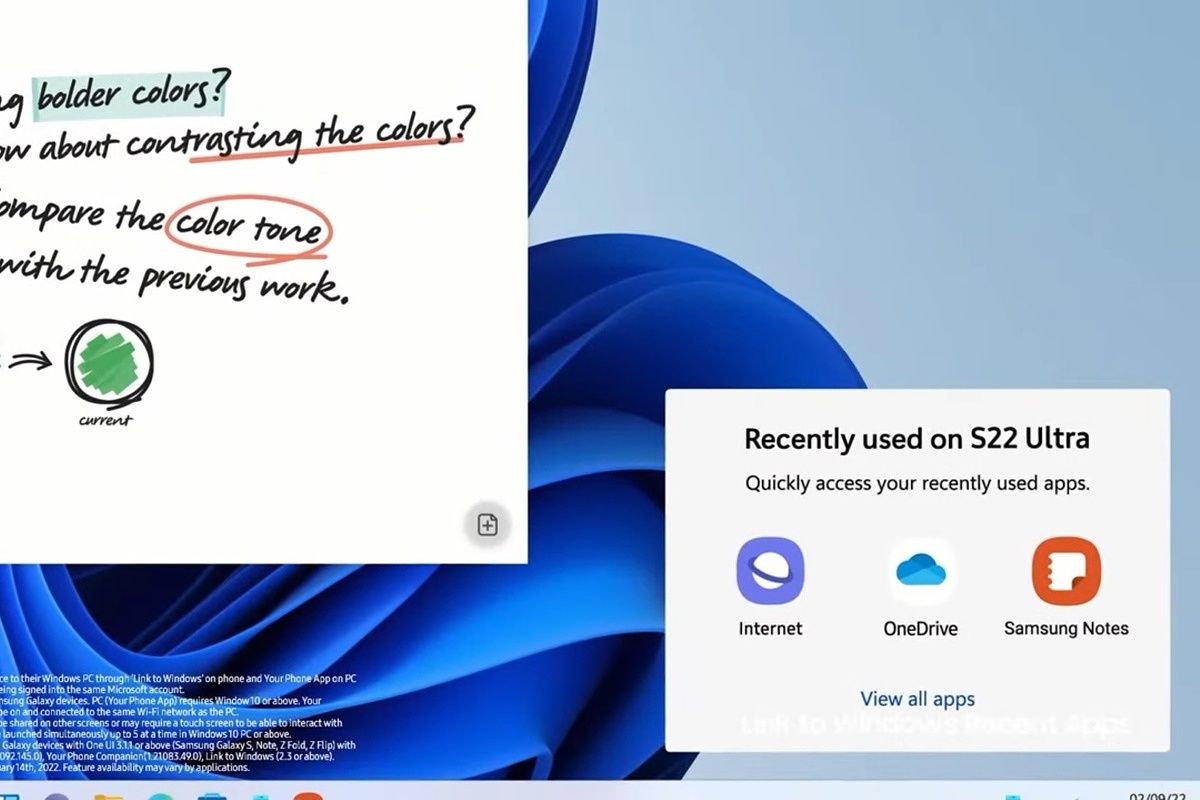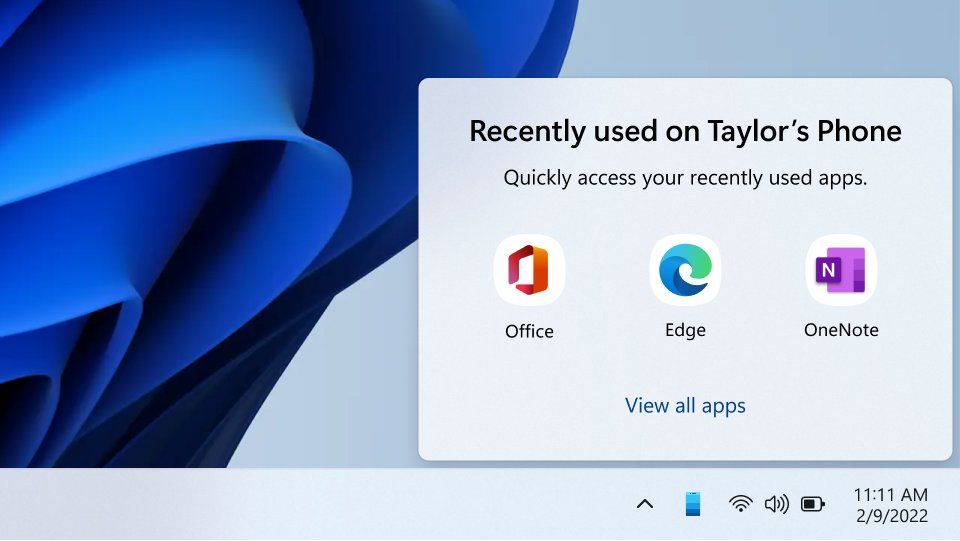Samsung phone users, including those who buy the new Galaxy S22 series, are getting a new feature for the Your Phone app on Windows 11 and Windows 10. With an upcoming update, you'll be able to see recent apps from your Samsung phone on your Windows PC's taskbar, making it easier to pick up where you left off.
The feature was briefly mentioned and shown off during today's Unpacked event, where Samsung also unveiled the Galaxy S22 series as well as the Galaxy Tab S8 family of tablets. You could already use the Your Phone app to open apps from your Samsung phone on your PC, but you'd have to open the app manually to do it. Alternatively, you could pin an app to the taskbar for quick access.
Now, you'll see a Your Phone icon in the notification area (also called system tray) of the taskbar, which lets you see the apps you recently opened on your phone. This way, you can quickly pick up something you were doing on your phone and continue it on your laptop or desktop. You can get a clearer look at the experience in the image below, shared by Microsoft's Analy Otero Diaz on Twitter.
Samsung and Microsoft have a long-standing partnership, with many Samsung phones shipping with Microsoft services and apps pre-installed. Samsung has also brought some of its apps to Windows, and there's even some integration between Samsung Notes and Microsoft's OneNote. At the same time, Microsoft has always favored Samsung phones when it comes to features for the Your Phone app. Outside of Microsoft's own Surface Duo family, only Samsung phones support features like screen mirroring in the Your Phone app, and that later evolved into allowing users to open apps in their own window as if they were PC apps.
If you don't have a Samsung phone, you'll soon have the option to run Android apps on Windows 11 with the Windows Subsystem for Android. Microsoft is releasing a preview of Android app support Windows 11 sometime this month, though it will only be available in the United States, officially. Those apps can't rely on Google services, though, unless you try to install Google services on the Windows Subsystem for Android with unofficial methods.


